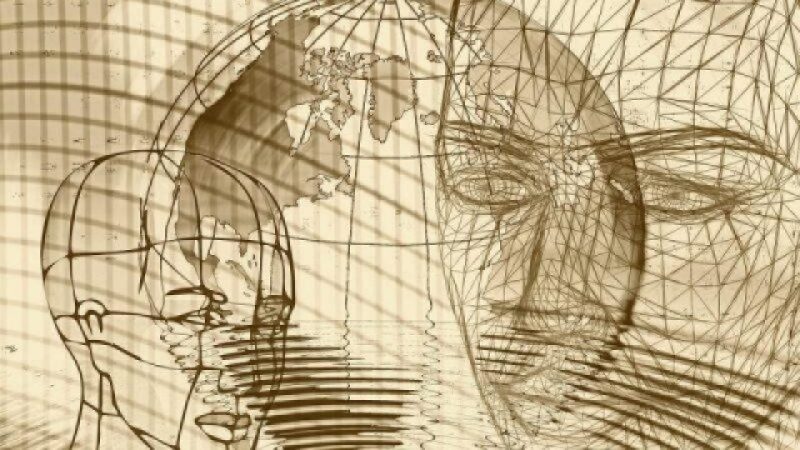Elon Musk dreams big with Neuralink startup
Article By : R. Colin Johnson

Entrepreneur Elon Musk is known for dreaming big. With his new startup, Neuralink, he might be surpassing himself as he targets trans-humanism, something critics call an "impossible dream."
Quirky billionaire Elon Musk has taken on another "mission impossible" as he announced the new startup, Neuralink, for which he is CEO. Neuralink is otherwise declining to give interviews. The company is in stealth mode, except for Musk's favourite cartoonist, Tim Urban.
In Urban's cartoon description, Neuralink (unlike Musk's previous endeavours, Tesla, Space X, and OpenAI) is aiming at what critics call an impossible dream: the brain-cap, otherwise known as transhumanism. This brain-machine interface company's mission has been called "human-to-human telepathy" by MIT Review, which is sceptical about the technology's viability.
This description of Neuralink's purpose may well be a ruse aimed at diverting attention from its real goal of curing brain maladies—such as Alzheimer’s—since its mentioned in Urban's cartoon. In fact, that would put Musk's recent venture on a footing with his other efforts SpaceX and Tesla.
Whatever the real goal, Musk has assembled a star-studded team to accomplish it:
- Paul Merolla, lead chip designer on IBM's SyNAPSE program, where he led the development of its TrueNorth brain-emulating chip.
- Vanessa Tolosa, Neuralink’s microfabrication expert and previous biocompatible microelectrodes designer.
- Max Hodak, who founded Transcriptic's robotic cloud laboratory for the life sciences.
- Dongjin Seo, who invented neural dust—tiny ultrasound sensors that provide a non-invasive manner of recording brain activity.
- Ben Rapoport, a neurosurgeon that also has a PhD in Electrical Engineering.
- Tim Hanson, materials science and microfabrication expert developing the core technology used at Neuralink.
- Flip Sabes, who specialises in cortical physiology, theoretical modelling, and human psycho-physiology.
- Tim Gardner, an expert on the relationships between patterns of neural activity on different time-scales.
And they still have 17 slots yet to fill:
- Microfabrication Engineer (MEMS & Sensors)
- Mechatronics Engineer
- Polymer Scientist
- Medical Device Engineer
- Electrochemist
- Analog & Mixed-signal Engineer
- Software Engineer, Embedded Systems & Firmware
- Software Engineer, Infrastructure & Tooling
- Biomedical Engineer
- Hardware Systems Integration Engineer
- Lab Technician
- Microelectronics Packaging Engineer
- Principal Scientist, Advanced Interfaces
- Senior Scientist, Brain-Machine Interfacing
- Senior Scientist, Neuroscience
- Senior Technician for Immunohistochemistry
- Software Engineer, Medical Imaging
What's the problem?
Besides emulating Facebook, according to the cartoon. "Facebook, the maker of the Oculus Rift, is diving into this too," the cartoon said. "In an interview with Mark Zuckerberg about VR, the conversation at one point turned to BMIs [brain-machine interfaces]."
Our course, there have been brain-machine interfaces that perform simple tasks, such as move a cursor and control smart prosthetics. These apps have advanced to the point where patients need only a few months of training to master the BMI. But most experts claim the brain cap idea of Neuralink is doomed.
"Neuralink wants to add another layer to the cortex that allows it to access external memory and communications channels using interfaces to thousands or even millions of neurons," said Pascal Kaufmann, founder of Starmind International AG (Küsnacht, Switzerland). He claims that Neuralink and many others have it all wrong. They are aiming to add another layer on top the cortex when they should be learning how it works first.

Figure 1: Pascal Kaufmann is the founder of Starmind International AG. (Source: Starmind)
"Neuralink is making a smart marketing move by starting with medical applications, which will give them FDA approved access to learning how to interface to neurons," said Kaufmann. "But there is a huge gap between what this possible and what they are shooting for—the brain is completely different than a computer. In fact, about 90 per cent of brain cell's functions are unknown."
The smartest thing scientists have done so far, according to Kaufmann, is teach people how to unload their mental information into their smartphone, especially the iPhone—he claims—since it offers an integrated environment for sorting and accessing all the different kinds of information we use then access it from a single interface.
However, the goal of a direct machine-man interface is go the other direction. Instead of reading a book on the smartphone, Neuralink wants to download the book—or even a skill like karate—into our brain's memory. We are no closer to that goal than we were in the 20th century.
"We need to crack the brain's code, to be able to directly insert information into it. Before then it does absolutely no good to learn how to insert thousand of electrodes into it as Neuralink wants do," said Kaufmann. "But if we knew the brain's code, we might only need two or three electrodes in the right places."
According to Kaufmann, Neuralink, Facebook, Google, and most of the rest of the world's brain scientists are assuming the brain as just a different kind of computer, but instead he claims it's more like a cellular automaton. "Starmind believes these cellular automata comprise of about 200 different animals with different skills all sharing the same brain," said Kaufmann.
Starmind itself specialises in extracting the information from those animals and storing their skills in traditional computers, so that it is not lost when employees quite or die. The employees themselves just go about their business, while Starmind collects the essential elements of their expertise for the company.